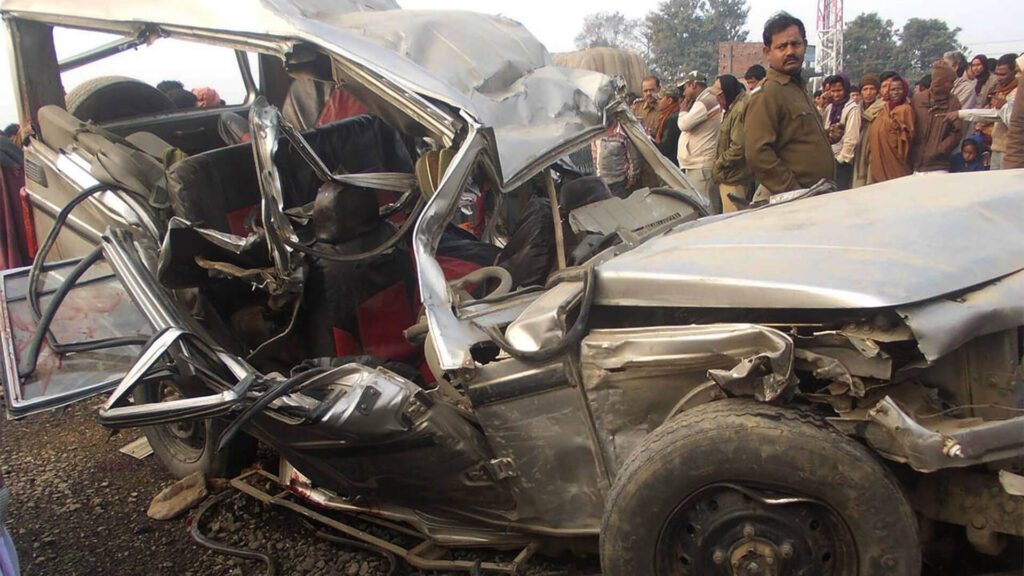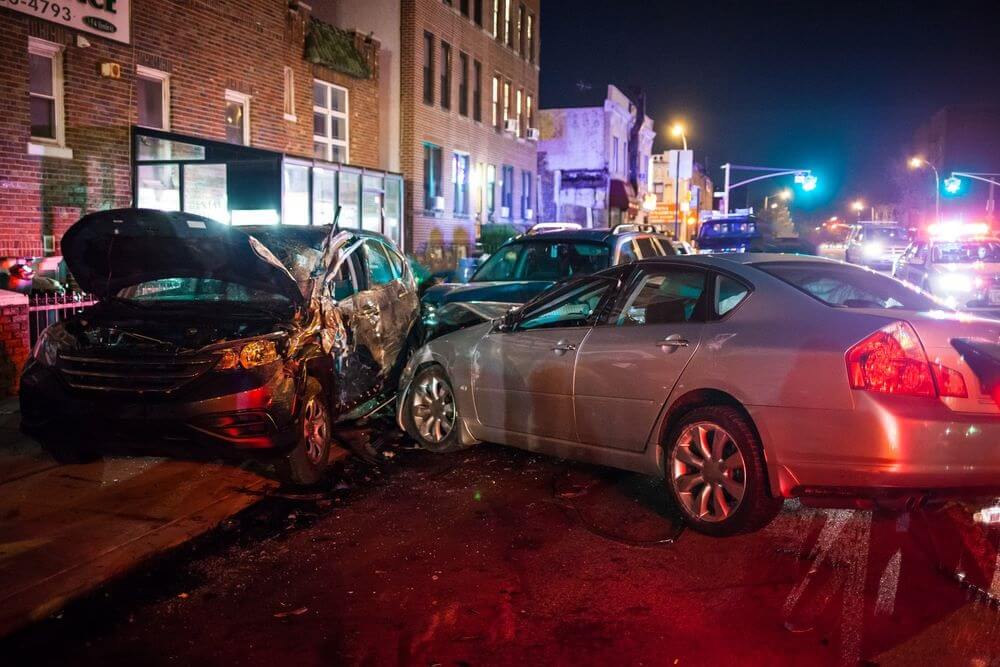
In 2023, as many as 1.73 lakh people were killed in India in road accidents. The figure was 1.69 lakh in 2022 and 1.59 lakh in 2021. The number of people injured by road accidents is well over 4.5 lakh per year. The number of road accidents in India is about 5 lakh per year, which means that, on an average, about 37 people got killed and 96 people injured in every 100 accidents in 2022.
Gravity of the Situation
You may get an idea of the enormity of these numbers with the number of people murdered in India every year, which is just 28,522. Do not forget, the only difference in causing death by accidents is that there is no murderous intent there but they are caused by negligence.
If you are still not shocked, you must compare them with the figures for a country like the USA because these days it has become fashionable to compare ‘Mahan’ India with its ‘friend’ USA for everything. India has got 35.4 crore motor vehicles (bikes, cars and trucks of all sorts) to 28.3 crore motor vehicles in the USA. The length of paved roads in India is about 4.5 million km compared to 5.12 million km in the USA. Yet, in the USA, the number of road fatalities was just 42,915 per year. The density of vehicles per km of road in India at 79 is not much different from their 56 vehicles per km. Yet, our accident rate per motor vehicle is 3.2 times higher.
Highways constitute just 5% of the road network in India but contribute to over 60% of the fatalities in accidents. Clearly, there is a fundamental problem with the way Indians drive their motor vehicles.

Root cause of the problem
In India, they do basically two things about road accidents. They simply collect gross figures of accidents, and lament or express concern over them in media. The understanding of the media and the officials of the phenomenon of accidents is so poor that they end up talking of civic apathy, government negligence, poor road design, insufficient safety barriers, poor signage, poor oversight, non-availability of trauma aid everywhere on the roads, and a fatalistic attitude as the causes of accidents. This is plain and simple crap; such irrelevant inanities are of no use at all in addressing the real problem.
Also Read: Why are road accidents an everyday affair in India?
While bad roads do contribute to accidents, good roads have no connection with people’s bad driving habits. Road engineering and design are important but merely installing crash barriers on the roads will not help. Crash barriers do not help at high speeds. Airbags cannot protect you if your car has been hit from the side as it happens very frequently on T junctions.

In India, no accident is ever analysed scientifically for the purpose of understanding it. For example, they do not bother to find out the causative factors, the types of vehicles involved, and the situations of driving and road under which the accidents took place, etc. The police are, at best, just interested in forming a ‘notion’ about who was at fault, so as to charge or not charge a case and be done with it. For a mere article, it was not worthwhile for me to undertake this exercise in respect of the entire country. However, I have done the requisite analysis in respect of the past 10 years for my cadre state Kerala, which has a very high accident rate and thus gives a fairly accurate representative idea.
Also Read: Why do children get killed in road accidents?
Main Causes of Accidents
Elsewhere in the world, the causes of accidents are summarized into an acronym DUVERT. D: driver related. U: user related (e.g. pedestrians crossing roads in a wrong manner). V: vehicle related (e.g. lack of safety measures). E: environment related (e.g. fog). R; road related (e.g. absence of proper signage). T: traffic related (e.g. intermixing of through traffic with local traffic). Leave these for seminars.

The main and real causes of accidents in India, as found in my analysis are as follows:
Bad Driving Habits: Most of the bad driving habits of Indians are borne out of a historical socio-cultural tradition of disregard for the law. It is a matter of ‘tashan’ for the Indians to violate rules and get away with it. In their view, it elevates their status—‘kaun mera kya kar lega’. Even a person, who might pass a driving test fairly, still indulges in bad driving habits.
Bad driving habits include: emerging suddenly from a side road without looking left or right; giving turn indicator at the very last moment; brake lights often not working; tailgating or driving too close to the vehicle in front and not accounting for his sudden braking; weaving amongst lanes, particularly by bikes; aggressive driving; cutting corners at junctions; racing with others; jumping red lights; undertaking (that is hogging the middle and outside lanes even if they are not driving fast enough); not dipping main beams on highways for incoming vehicles; and poor or no use of side-mirrors, etc.

Poor Driving Skills: Poor driving skills are a direct consequence of legendary corruption in the process of granting driving licenses and the driving tests being farcical.
Powerful Cars and Issue of Attitude: The size of the car these days has become a measure of the weight the owner throws around on the roads. That is, the bigger the SUV, the more he believes that the ‘might of his car’ automatically gives him the right of way.
Powerful Cars and Issue of Control: Indians are obsessed with squeezing value for money. One who has spent scores of lakhs or even crores of rupees to purchase high-powered cars capable of over 300 kmph feels frustrated that he had not invested that money to drive at a sedate 50 kmph in a city, making him impatient, irritable and prone to mistakes!

Further, most drivers are not able to cope with these cars’ highly responsive steering and very quick pick-up converting them literally into ‘Killers on Wheels’. Nearly 70% of accidents in cities are due to powerful cars and SUVs.
Over-speeding: Poor control of the vehicle is usually but not necessarily a result of over-speeding.
Inattentive Driving: Attributed to alcohol, talking on mobile, or fatigue/feeling sleepy.
Attractive Hoardings: Hoardings are meant to be seen, because if they are not meant to be seen, what is the point of installing them in the first place. Even if they generate revenue, they dwarf road signs and are distractions for drivers.
Ruthless Enforcement is the Key to Reducing Accidents

Use the Domino Effect: Enforcement has a ‘demonstrative domino effect’. You have to carry out a concerted drive for just two weeks and the message will go round that police has become strict. Then people will behave for some time, say four weeks. As they become complacent again or start taking liberties, you resume the drive.
Threats help deter violators. Prominent boards hanging in the middle of the roads with luminescent sign that ‘you are under speed radar coverage’ or ‘you are under CCTV coverage’ will scare many.
Use Breath Analysers Liberally: Breath analysers must be those which give a printout also. Since government departments are notorious for merely reproducing vendor-given specifications in tender notices, going by the lowest tender, one is very likely to get a most useless breath analyser.
Specifications must be made so as to test the products scientifically. For example, by taking volunteers of equal body weight with same food in their stomachs and then measuring the alcohol in their breaths after different intervals and giving them same quantities of exactly the same type of liquor. The experiment must be repeated with different quantities of liquor. The measurements given by the machine must correspond to the quantities and intervals in a consistent manner. This requires some brain and scientific mind amongst government officers, which is, of course, extremely rare in India.

Use them liberally outside even five-star bars. Most of the people, who drink there, drive themselves after the party. How often have you seen any checking by breath analysers on such people? The recent Dehradun accident which killed 3 boys and 3 girls resulted directly from driving an Innova after late-night liquor party, racing a BMW and finally crashing into a loaded truck from the rear. That is where the police must not be cowed down by the rich and the powerful.
Amend the MV Act and Rules: The MV Act and MV Rules must be amended to make specific instances of bad driving habits punishable as discussed above. ‘Rash and negligent driving’ is too vague a term and liable to get bogged down in courts. The Central Motor Vehicle Rules 1989 is a 324 page long document, which hardly anybody bothers to read. It has ingloriously failed in curbing accidents. Why, because, in a classic example of intellectual bankruptcy, the rules focus on manufacturers and not on drivers who cause accidents.

Traffic accidents are one thing that lend themselves eminently to ruthless enforcement of traffic rules and good driving habits, because their violation is the biggest source of accidents. Hitherto police checking has remained a most mundane and mindless process. Whether someone has his driving license and RC/IC in his pocket or not is not important; how he is driving is important. Focus on that. Needless to say, enforcement must be fair and ruthless. In other words, it must be undeterred by the threat of the type of ‘tu nahin janata mera baap kaun hai’.
Don’t Collect Fines on the Spot, Make Them Run to Courts: The habit of fining on the spot to boost state revenues is plainly stupid. Those who are driving cars of Rs. 25-50 lakh are very much in a position to pay fines of Rs. 10,000 also. The key to deterrence is to impound the vehicle right there and charge the case, forcing them to run to the court for getting the vehicles released and then frequent appearances for the case.

State governments must designate some judicial magistrates exclusively dedicated for traffic cases and it must be ensured by periodic review that they do not go the way in which MACT courts have gone.
Police Must Use Decoy Vehicles to Trap Errant Drivers: Most crooks start driving carefully on seeing uniformed police presence somewhere but instantly revert to bad driving habits the moment they cross them. To trap them, decoy vehicles must be used to make video recording of errant vehicles. The public and media may also be invited to submit videos of violations and submit them immediately to avoid allegations of fakes. If possible, errant drivers must be nabbed by a proper traffic police vehicle, or prosecuted on the basis of the recording. The mere information that it is not just CCTVs but decoy vehicles also that are recording you will be a great deterrent.

Focus on the Studs: Young men driving SUVs or other powerful cars have been found to be particularly offensive in their driving habits out of arrogance, desire to show-off machismo, impress dumb girls or for thrill. They must be especially targeted in such drives.
Make Driving License Tests Corruption-Free, Stringent and Realistic: Making anything corruption-free is almost impossible in India. However, tests can be made more realistic and stringent. Most of the drivers have, for example, no idea at all of the braking distances of their vehicles at various speeds under various road conditions, such as after rains. Most drivers are simply unable to cope with some difficult or unexpected situations: for example, what should they do if the car skids; or what to do if they are obliged to brake while climbing a slope and then the vehicle starts sliding back; what to do if they are trying to overtake and find another vehicle coming head-on; what if braking distance turns out to be greater than what they had in mind; etc.


